PREDICTABILITY, CHAOS & THE WEATHER
Ross Bannister
Data Assimilation Research Centre, University of Reading


Mechanics
Fluid dynamics
Meteorology
Thermodynamics
Mathematics
Computer Modelling

1. How is a Weather Forecast Made?
2. The Observation Network
SURFACE
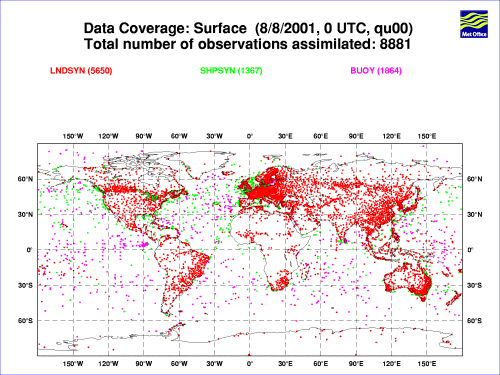
|
SONDE
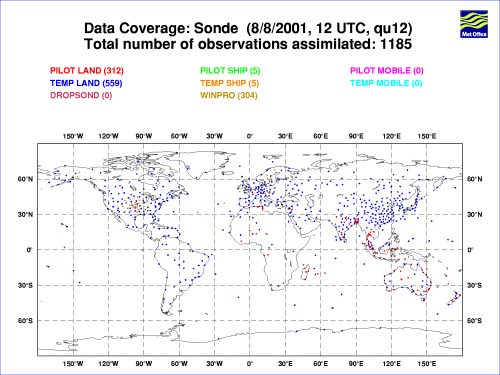
|
AIRCRAFT
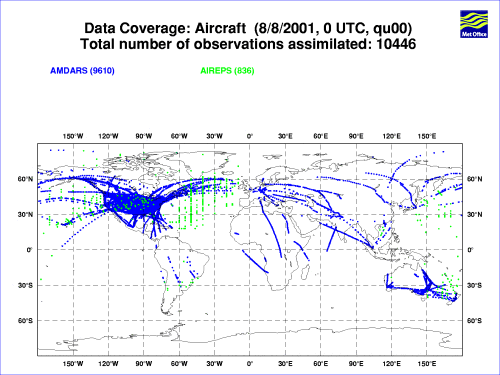
|
SATWIND
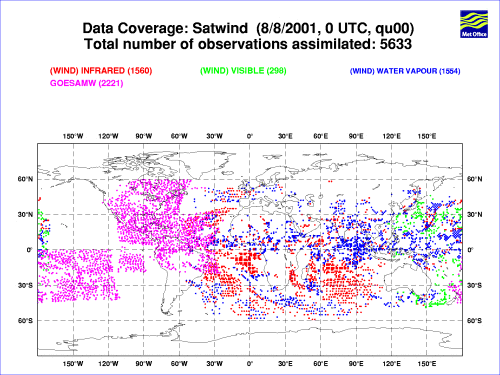
|
SSMI
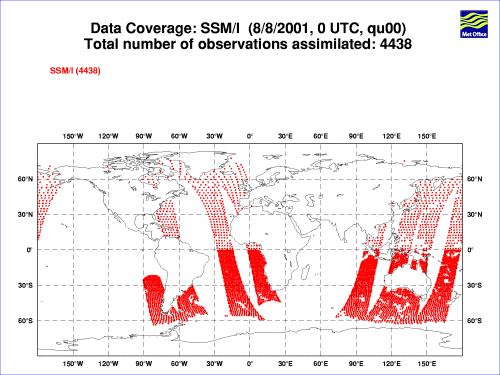
|
ATOVS

|
Above figures (c) Crown copyright, Met Office.
3. Why is a Weather Forecast Valuable?
Domestic
|
- Do I take an umbrella?
- Shall I put the washing out to dry?
|

|
Leisure
|
- Sporting events
- Caving, mountaineering
- Holidays
|

|
Agriculture
|
- Frosts
- Weather related disease risk
|

|
Shipping
|
|

|
Construction
|
- Wind/precipitation/temperature
|
Air flight
|
- Routing (exploit tailwinds, avoid headwinds and turbulence)
- Fog
|

|
Road transport
|
- Ice/fog/wind/precipitation
- Salt roads?
|

|
Rail
|
|

|
Power distribution
|
- Weather forecast = demand forecast
|

|
Retail
|
- Weather enforced demand (e.g. icecream/umbrellas/coats/etc.)
|

|
Defence
|
- Plan training
- Strategic planning during conflict
|

|
Weather forecasts save the UK £1 billion annually
4. Forecast Failure
MeteoSat Image
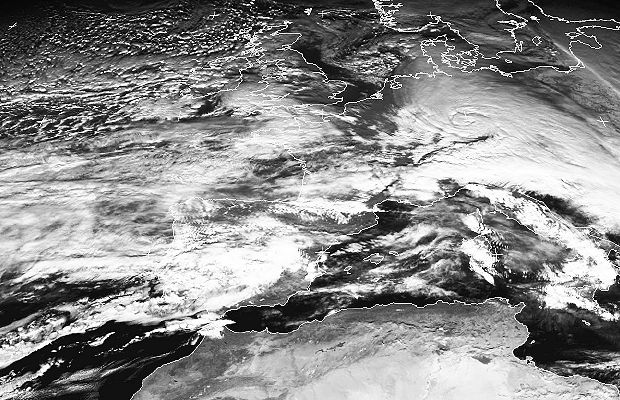
(c) EUMETSAT
| 'Bad' forecast |
'Better' forecast |
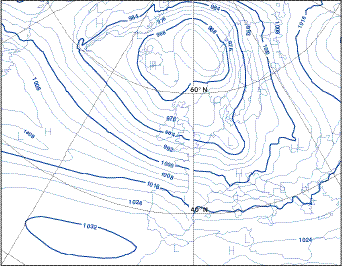 |
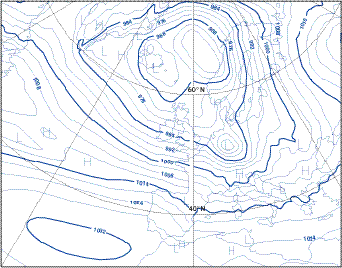 |
(c) Crown copyright, Met Office
- "Lothar" was a deep low-pressure system which hit Northern France on Boxing Day 1999.
- 110 mph winds recorded in Paris.
- 100 people killed across Europe.
- 4000 trees uprooted in the Palace de Versailles (Paris) alone.
- Automated forecasting systems failed to forecast its severity.
- Observations were 'thrown away' as the computer assumed that they were 'wrong' ("quality control")!
5. Models and Predictability
Oxford English Dictionary: Model
- Something that accurately resembles something else.
- A simplified description of a system (often in mathematical terms) that is put forward as a basis for calculations, predictions, or further investigation.

F=ma
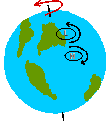 |
Moisture
 |
Radiation
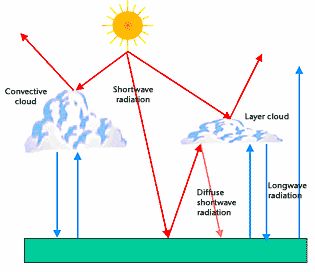 |
Surface
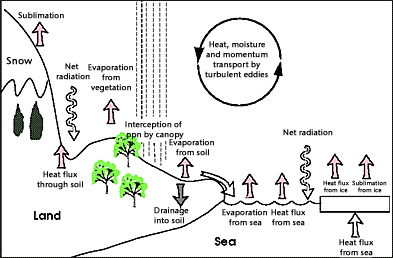 |
(c) Crown copyright, Met Office
|
The weather forecast model tries to predict the future state of the atmosphere using the laws of physics given the current state (i.e. the weather now).
|

- The more accurately we know the state of the atmosphere now, the better is our forecast, but ...
- The predictability barrier for the atmosphere is ~14 days.
- Many people would say that the atmosphere is chaotic.
- All measurements have errors.
- All models are wrong (but we hope that they are adequate).
6. What is CHAOS? - Simple Systems
Chaos:
- No periodic behaviour.
- Sensitivity to initial conditions.
- Chaotic motion is difficult or impossible to forecast.
- The motion 'looks' random.
- Non-linear.
Can you think of any other chaotic systems? 
7. Data Assimilation
|
In weather forecasting, data assimilation is a means of using current observations to prepare a forecast model.
|
Data assimilation is a non-trivial task:
- Observations are spread in space and time.
- There are "data voids" (esp. over oceans and in the upper
troposphere and stratosphere).
- Many observations are 'indirect'.
- All observations have uncertainties.
|
- The treatment should ideally be consistent with the laws of
physics.
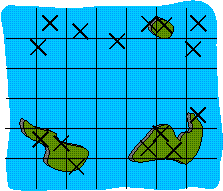
|
In the context of chaos theory:
The better our knowledge of the state of the atmosphere now, the better the forecast quality.
|
9. Summary

-
It is thought that the Earth's atmosphere forms a chaotic system.

-
The definition of chaos here does not imply disorganisation (the system follows
definite laws).
-
In order to predict the future state of a chaotic system exactly, its current
state must be known with zero uncertainty and the model must be
perfect.

- The more that is known about the current state of the system,
the better the forecast (but remember the predictability barrier).
-
Information from observations are incorporated into a forecast model using the
mathematical technique of data assimilation.
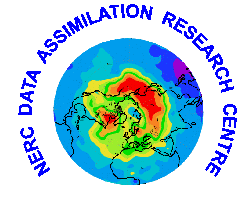

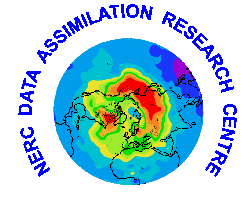





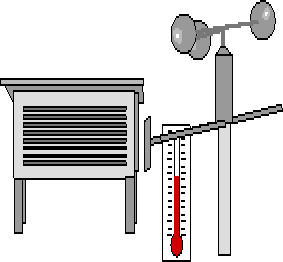

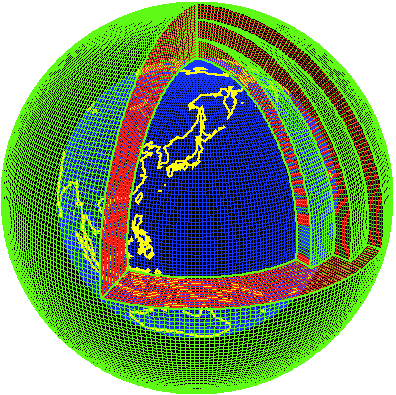

































![]()